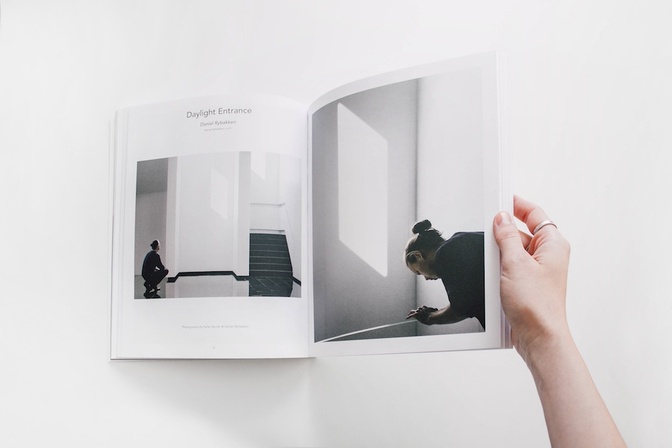Stand out from the masses.

In some industries, falling into a grad role post-degree is a given. In others, like the graphic-design industry, taking home that piece of paper after three, four or five years isn’t even half the battle, especially when you’re up against an infinite number of graduates with the same qualification and pretty similar folios.
So, how do you get your black book noticed when most creative agencies receive at least a few folios a day? We had a chat with Mark Lipert, Paul Milinski and Dan Thomas from Melbourne design studio Niika, to see what keeps them turning those pages from front to back. This is their advice.
It’s important to tailor your folio to the employer, says Thomas, Niika’s creative director.
“Generally speaking, employers are not after a jack of all trades,” he explains. “It can be hard to cut out work when you truly believe that it's your finest, but if it's not relevant it will communicate a lack of focus and understanding to your potential employer.”
“A few stand-out pieces speak volumes more than a sea of mediocrity,” says Thomas.
“By limiting the amount of work you present you are also able to communicate confidence, an understanding of what is required and an appreciation for the time of whoever is viewing your folio.”
“While your school work may look great, having some client work in your folio communicates a whole range of talents that are very attractive to potential employers: initiative, communication, drive and resourcefulness to name a few,” says art director Milinski.
“Using real-world work communicates you know how fulfil a brief and understand what is required from a given project, which is super important.”
Because of the competition, your folio may only get 30 seconds of attention. Therefore to make an impression, Lipert, Nikka’s managing director, says it’s important to “hit them with the good stuff first”.
“At the end of the day it comes down to people hiring people,” says Lipert. “While some employers will only care about the quality of your work, others will care deeply about the quality of your person.”
“If a potential employer receives two amazing folios this may be the thing that tips the job in your favour.”
Whether to print, PDF or create a website of your folio is a frequently asked question. Given how easy it is to create an online folio these days, Thomas recommends creating a website of your work, as it looks “much more impressive” to potential employers.
“Although the bottom line is, no matter how well presented your folio is – if the work isn't up to scratch then it simply won't be enough.”
“It's very common for young creatives to be emotionally attached to their work, so it's very important to get some objective, honest feedback before you present your folio,” says Lipert.
He recommends asking peers you’ve studied with, emailing that one lecturer who inspired you, or hounding that creative director who gave you their business card at the pub.
There’s going to be times when your friend, lecturer or client doesn’t like your work but, Milinski says, it’s important to learn from any feedback.
“It can really hurt to have your work criticised, but don't feel bad about it,” he says. “The sooner you are able to separate yourself from your work, the sooner you will be able to reflect on your strengths and weaknesses with clarity and produce the best possible folio.”



